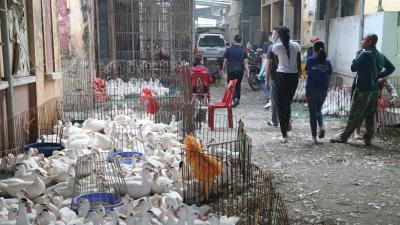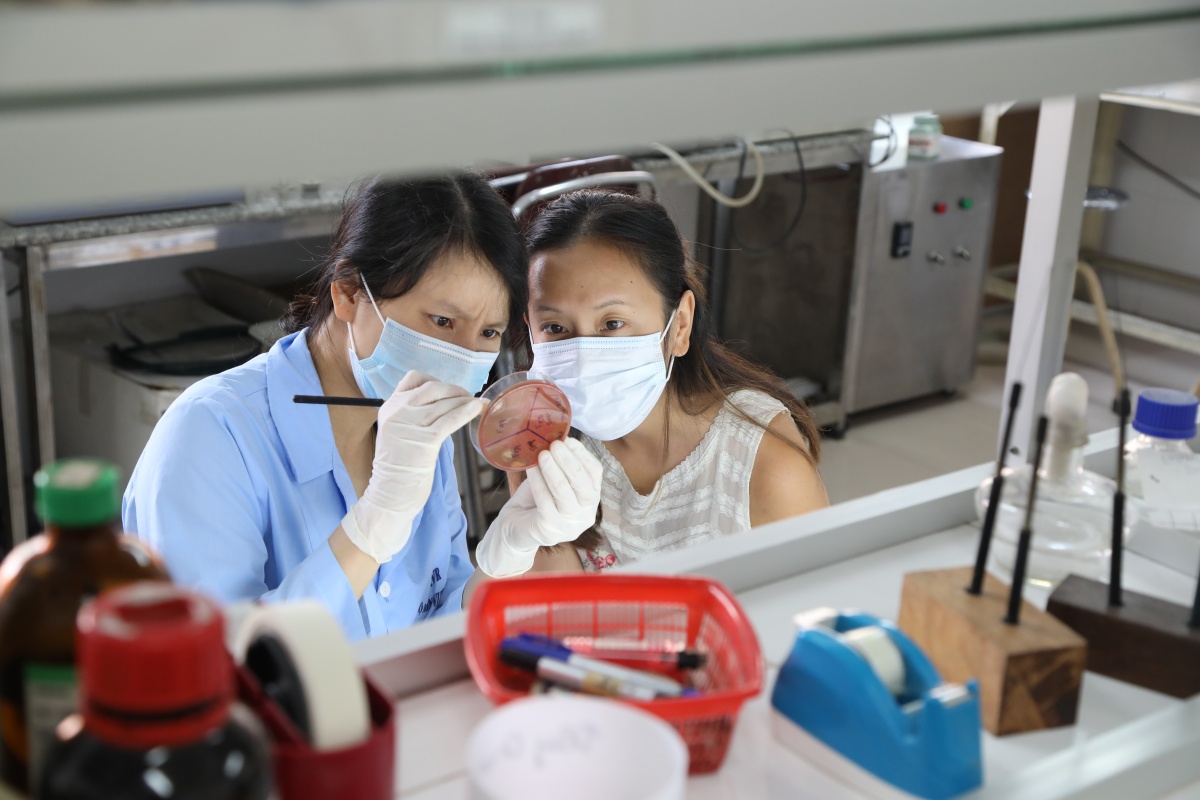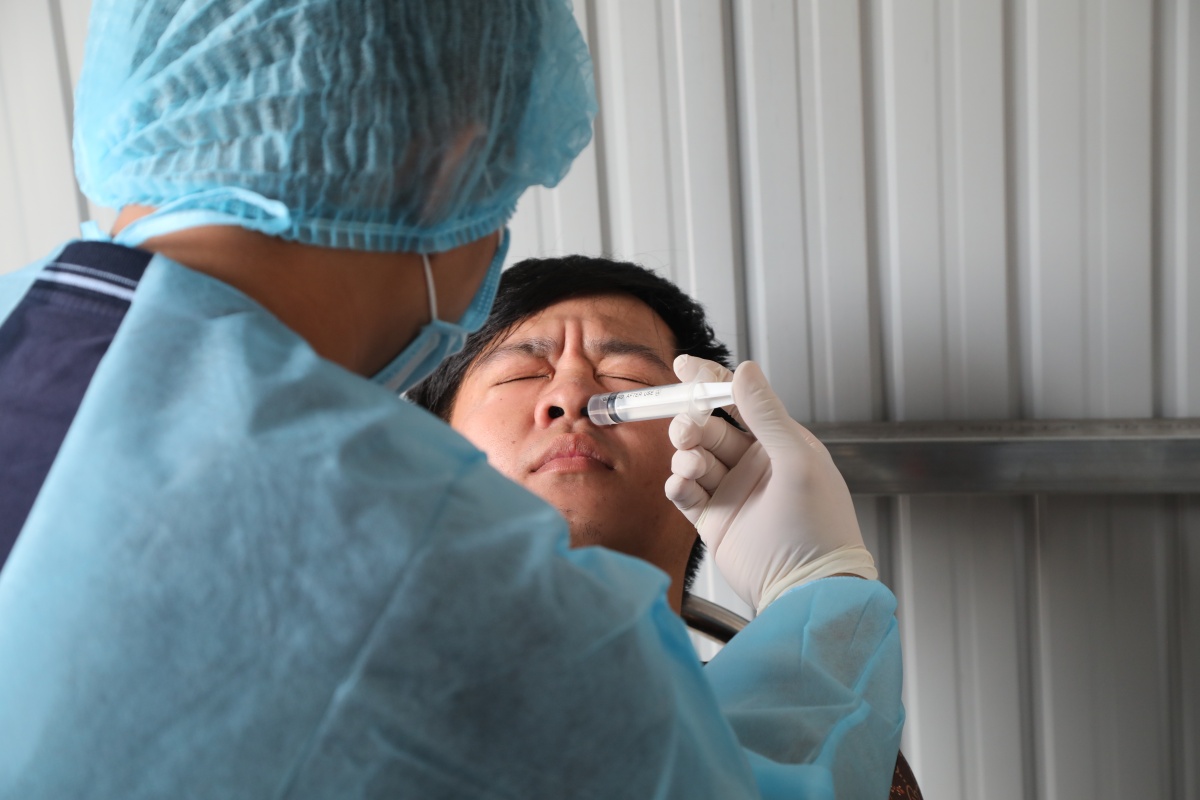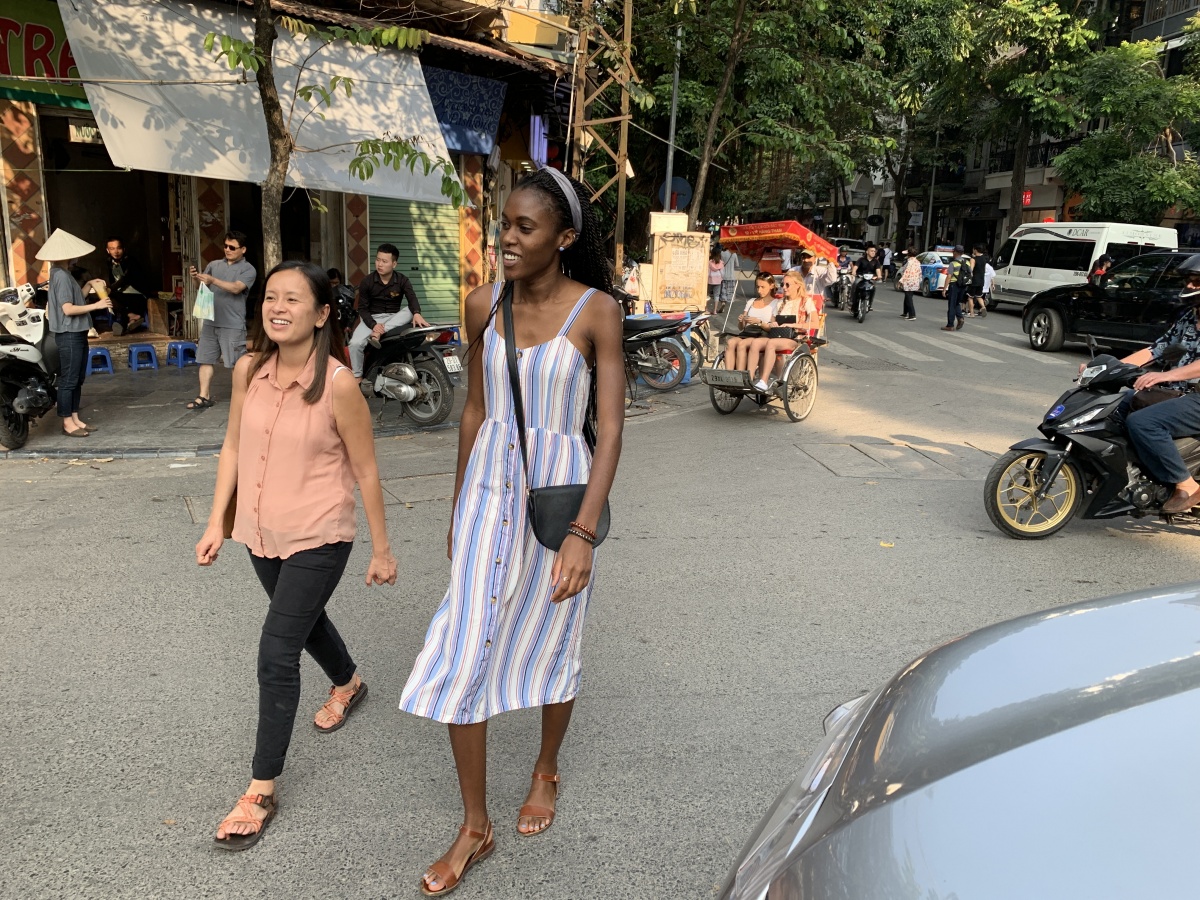

Looking for Disease in a Global Hotspot
This article first appeared in the DukeMed Alumni News Spring 2020 issue.
It’s an early November morning and third-year Duke medical students Amanda Farrell, MSIII, and Thao Nguyen, AB’16, MSIII, are walking through the massive, muddy, and malodorous Ha Vi live bird market near Hanoi, Vietnam, looking for potential disease.
They have come to the right place.
The World Health Organization considers Vietnam a global hotspot for disease emergence, in part because it borders China, which is home to half a billion pigs and an equal number of poultry. As was proven with the current coronavirus pandemic that originally broke out in Wuhan, what happens in China doesn’t necessarily stay in China.
“It’s a sensory overload in every single way,” Farrell says of the live bird market. But bird noise and foul smells are of little concern. Farrell and Nguyen are embracing a unique opportunity to contribute to an international research study led by Duke that seeks to document Vietnam’s zoonotic threat—diseases that can jump from animals to humans.
The project consists of researchers visiting various live bird markets and pig farms throughout northern Vietnam. They collect nasal washes and blood samples from workers, bioaerosol samples, and fecal matter and oral swabs from poultry and pigs.
“This is an incredible international team, and I am grateful to be here,” Farrell says.

Veterinary Medicine in Hanoi.
On the Front Line
The two students look on as a team member from the Vietnamese National Institute of Veterinary Research (NIVR), injects a small amount of saline into a nostril of a young female market worker, who then spews the liquid into a cup. The fluid will be tested for pathogens at the National Institute of Veterinary Research (NIVR) labs in Hanoi.
“It looks uncomfortable, and I can’t imagine doing that,” Nguyen says.
“But when they’re told of the importance of this study and how they can participate,” Farrell adds, “they seem excited to do it.”
For Nguyen, a Vietnamese American, her work in Hanoi represents a way to integrate her personal story with her clinical interest in global health.
“It’s incredibly meaningful on a personal level to come back to my home country and be able to understand the diseases that are going on here,” she says.
During their eight months in Vietnam, the students are played key roles in the project as members of the lab teams processing the samples collected in the field.
“Their work is very important because they help us to get results more quickly, and they motivate our young staff,” says Bui Nghia Vuong, vice head of virology at NIVR. “They have a big influence here.”

potential zoonotic pathogens.
Unique Third-Year Research Projects
Farrell and Nguyen also are conducting their own research as part of their Duke medical education. Nguyen’s third-year project is to determine the prevalence and risk of Streptococcus suis, a pathogen found in pigs that is the leading cause of meningitis in Vietnam.
Farrell is hunting for Influenza D virus among swine workers. It was first discovered in 2011 in pigs in Oklahoma and has jumped to bovine herds in the U.S., China, Japan, France, and Italy. She aims to determine if it exists in Vietnam and whether it has infected humans there.
Farrell says this type of international experience is precisely why she is at Duke University School of Medicine. Unlike most of peer institutions, Duke’s medical school curriculum devotes the entire third year to research and scholarly investigation.
“The third-year research year is such a unique opportunity,” Farrell says. “When I was planning it, I contacted Duke Global Health and was told, ‘We have hundreds of opportunities. Whatever you want to do, we’ll support you all the way.'”

Nguyen says the opportunity is invaluable.
“It’s really meaningful to take a step back from what we’re learning in the textbook and see medicine in action in real life,” he says. “The Vietnamese team is putting their lives into this research, and that is beautiful to see.”
The Duke-Vietnam partnership is headed by Gregory Gray, MD, MPH, a Duke professor of global health and infectious diseases.
Gray, who also holds an appointment in the Nicholas School of the Environment, champions the “One Health” approach of health care, which encourages multidisciplinary collaboration across sectors to address public health threats such as zoonotic diseases. Human health is intimately tied to animal and environmental health, Gray points out.
“This is Duke’s recognition that what happens in the developing world can impact people of the United States quite rapidly,” Gray says. “Amanda and Thao are blessed that Duke has programs to make international experiences like this possible.”
Embracing the Culture
The students say they easily settled into their new Vietnamese lifestyles and have forged friendships with their fellow lab mates and researchers. “They’re all roughly my age—26 or so,” Farrell says. “When we’re pipetting we have really good conversations. They’ve taught me so much about the Vietnamese culture. We feel really welcomed here.”
When not in the lab, or joining the team in the field, Farrell and Nguyen find plenty of ways to enjoy their host country, like exploring unique foods like eel and Bun Cha (pronounced BOON-chah), a noodle and grilled pork soup made notable by President Barack Obama when he praised it while visiting Hanoi with Anthony Bourdain in 2015.
“And Roti!” says Farrell. “It’s a small pastry that can be filled with chocolate or vanilla. It’s just really delicious and kind of melts in your mouth.”
Day trips included visiting Ha Long Bay, a UNESCO World Heritage Site about three hours from Hanoi that features thousands of otherworldly limestone islands towering out of emerald green water.
“It’s quite a beautiful site,” Nguyen says.
Farrell is grateful that the School of Medicine builds these exceptional learning experiences into its medical curriculum.
“All of Southeast Asia is just majestic and a really stunning place,” she says. “So, yeah, I’m really happy that I chose Duke.”

visited on a day off.
Update: COVID-19 Outbreak Curtails Student Projects
Amanda Farrell and Thao Nguyen had to cut their individual research projects in Vietnam short by three months when the severity and spread of COVID-19 became apparent.
While she was still in Vietnam, Farrell fell ill with a sickness that had the symptoms of coronavirus, but she was never diagnosed and made a full recovery. She was able to return to the U.S., but it wasn’t easy.
“I managed to get on the only international flight out the night that I left,” Farrell says. “The city fully shut down about three days later. It was very stressful.”
She said her research in Hanoi had to come to a complete stop. “So my final thesis will be incomplete,” she says. “Thankfully, Duke is allowing modified submissions for that.”
Nguyen was in the U.S. for a wedding, planning to go back to Vietnam afterward, when Hanoi ordered its city-wide lockdown. Nguyen said Vietnam quickly closed its borders to China and “were pretty rigorous with screening when it comes to people’s travel history, symptoms, etc.”
She was disappointed that she wasn’t able to return to say goodbye to friends and coworkers in Hanoi.
“I’m hoping to go back again once things (eventually) settle down,” Nguyen says.
In the meantime, back at Duke, Farrell is working with their project leader, Gregory Gray, MD, MPH, professor of global health and infectious diseases, on a COVID-19 study. The Duke One Health lab is studying the aerosolization of COVID-19 by collecting bioaerosol samples from COVID-19-positive patients and their hospital rooms at Duke. The project also hopes to further characterize symptoms and risk factors by surveying both positive cases and tracing contacts. Farrell’s role is in the lab processing the samples collected.
Story and photos by Jim Rogalski, Director of Video Productions and Senior Public Relations Specialist at Duke Health Development & Alumni Affairs.